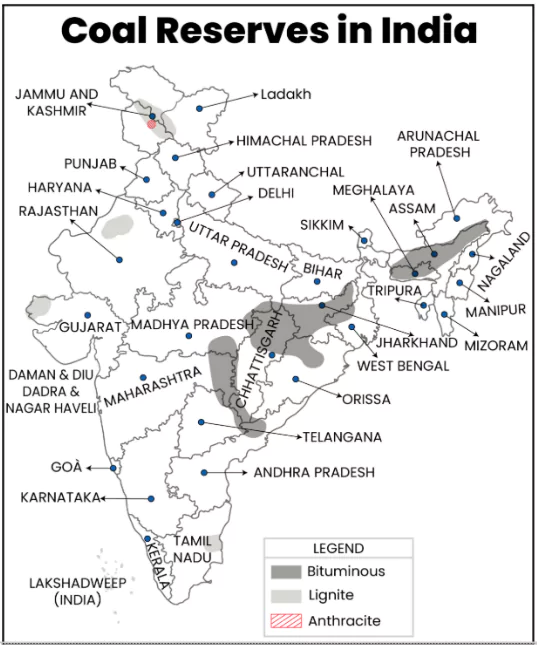![]() 24 Mar 2025
24 Mar 2025

India has surpassed 1 billion tonnes of coal production in FY 2024–25.
 Mainly bituminous and sub-bituminous coal.
Mainly bituminous and sub-bituminous coal.| Type | Features | Carbon Content | Location in India |
| Anthracite |
|
80-95% | Jammu & Kashmir |
| Bituminous |
|
60-80% | Jharkhand, Odisha, West Bengal, Chhattisgarh, Madhya Pradesh |
| Sub-bituminous |
|
35-60% | Found in some eastern and central coalfields |
| Lignite |
|
<35% | Rajasthan, Tamil Nadu, Jammu & Kashmir |
<div class="new-fform">
</div>